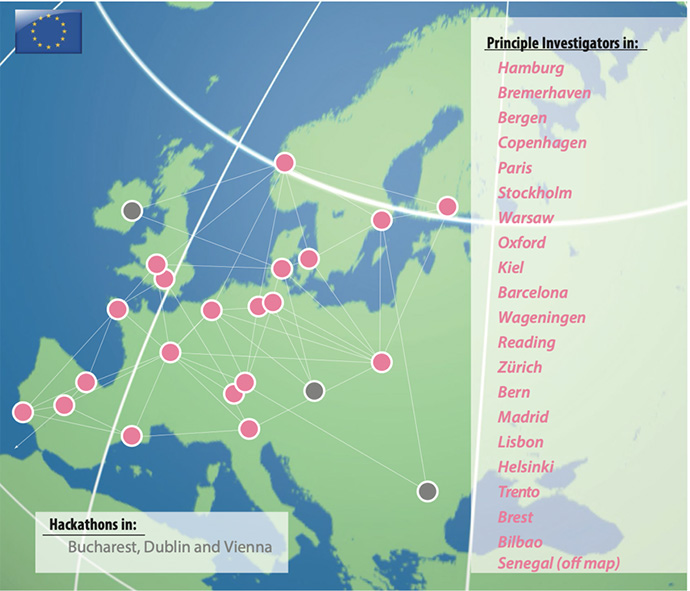ECMWF is taking part in NextGEMS, a project that started on 1 September and is funded by the European Commission’s Horizon 2020 programme. Over the next four years, NextGEMS will develop a new generation of Earth system models and use them to help fill gaps in our understanding of how the Earth system works and how the world’s climate will change over the next three decades. NextGEMS will also form the nucleus of a next-generation, more cooperative and pan-European approach to Earth system modelling, by involving 26 partners in 15 countries.
Main goals
NextGEMS aims to substantially increase the realism of Earth system simulations by developing two global storm-resolving Earth system models with resolutions of 2 to 5 km in the atmosphere and ocean. At these resolutions, important phenomena which are either neglected or need to be parametrized in today’s weather and climate models become explicitly resolved. These include storms associated with precipitating deep convection, but also a range of other processes, such as ocean mesoscale eddies, the influence of mesoscale land-surface heterogeneity and of topography on large-scale atmospheric circulations, and water-mass formation in the ocean. These resolutions are also commensurate with scales familiar and more relevant to end users from impact sectors, such as risk assessment, renewable energy or marine fisheries.

Simulations at the scales envisaged in NextGEMS will underpin both operational ECMWF forecasts by the end of the decade, and European efforts to create replicas of the Earth system in the European Commission’s Destination Earth programme. By developing these next-generation Earth system models, NextGEMS thus supports and contributes to ECMWF’s and Europe’s ambitions to significantly advance our prediction capabilities at all timescales.
To fully exploit the potential of NextGEMS storm-resolving models, a number of scientific challenges need to be overcome, related for example to the coupling between different Earth system components, the representation of processes which remain unresolved, or water and energy balance and conservation issues. ECMWF’s participation in NextGEMS will allow us to focus on some of these challenges. We shall, for example, work on a more accurate representation of moist physics, and of the way the land and ocean are coupled to the atmosphere at the scales envisaged in NextGEMS. This will support the science agreed in the ECMWF Strategy 2021–2030.
New ways of working
The simulations envisaged in NextGEMS are only becoming possible thanks to recent advances in supercomputing technologies and to investments in the scalability of the models at the core of NextGEMS storm-resolving Earth system models: ICON, developed by the Max‑Planck Institute for Meteorology and the German National Meteorological Service (DWD), and the Integrated Forecasting System (IFS) from ECMWF developed in partnership with Member States (coupled with the community ocean model NEMO and the Alfred Wegener Institute’s FESOM2 ocean model). However, the huge computational and data demands of NextGEMS simulations require new and more inclusive ways of working. NextGEMS will develop new workflows to exploit these simulations and will use them to fill important knowledge gaps. To do so, it will make extensive use of knowledge co-production hackathons to advance model development, but also to develop pilot projects on near-surface renewable energy production and coastal marine ecosystems and fisheries. In these pilot projects, users from these sectors will closely interact with model developers to better tailor the simulation output to their needs and thus short-circuit the value chain.

